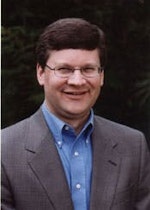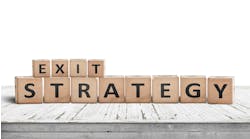Ask Roger Fowler how his shop, J&W CARSTAR in McMinnville, Ore., gets its work and he can quickly recite the sources.
| Connect with schools, parents |
|
Getting your shop’s name in front of students can be a good way to promote your shop and support your community. After all, it’s an opportunity to imprint your shop’s name in the minds of young drivers, and their parents will also see your support of their kids’ activities. Advertising in the school yearbook or newspaper, or sponsoring signage at ball fields are among the traditional ways to support student activities. But some more creative marketing efforts could include: • Helping sponsor the school’s drama productions or graduation night. • Allowing school clubs or church groups to hold fund-raising car-washes at the shop on weekends. • Working with Collision Repair Education Foundation program (http://tinyurl.com/TechShirts) that can provide technician uniforms – that include your shop’s name or logo as a sponsor – to every collision repair student at your local community college or vocational school. |
In addition to some insurer direct repair programs, the company is a referral shops for about a half dozen local dealers. Fowler said he is always surprised by the amount of customer-pay work the shop also does; it accounts for more than 25 percent of sales. In addition to the shop’s longevity in the community – Fowler bought the business in 1990 and became a CARSTAR franchise in 1992 – it builds name-recognition through advertising in the local newspaper, on a local AM radio station and on cable television.
“I always joke that we get 80 percent of our work off 20 percent of our advertising,” Fowler said with a smile. “We just don’t know which 20 percent it is, so we do all of it.”
Fowler is hardly alone among shop owners who can’t always pinpoint the exact mix of marketing and advertising that is propelling their businesses forward. But Fowler and other seasoned shop owners say there’s also no one right marketing recipe for every shop; it’s a matter of trying things to see what works for your business and your market.
Here’s a look at some of some marketing ideas that have worked for some shops around the country, ideas that might fit successfully in your shop’s marketing mix.
Have more to offer customers
Joe Wheeler said having more than one thing to market has helped Wheeler’s Collision & Paint in Kelso, Wash., stay busy. In addition to standard passenger vehicle collision repair work, Wheeler’s 10 employees offer complete mechanical work as well as repair of RVs and heavy-duty trucks.
Mechanical work, in particular, Wheeler said, allows the shop to offer customers more services – and at work at rates not controlled by insurance companies.
Its affiliation as a NAPA AutoCare Center for both mechanical and collision since 2005 is also part of the shop’s marketing.
“It gives people an additional assurance through the warranty,” Wheeler said. “We offer a great warranty ourselves, but that’s also backed by the nationwide NAPA warranty.”
The shop participates in no insurance direct repair programs, but relies heavily on its long-standing reputation in the community, a good website, and referrals from fleet managers, RV dealers, and mechanical shops that don’t do collision work. Wheeler does some radio advertising, but also has good success with ads on shopping carts in several local grocery stores.
“Those are excellent for advertisements,” he said. “It’s like a billboard every time they shop.”
Go whole hog
Wicklund’s CARSTAR in Liberty, Mo., has an annual “Go Whole Hog for CARSTAR” event every year, putting on an evening hog roast. An “after-hours” session for the Liberty Area Chamber of Commerce, the event attracts hundreds of people to the shop each year for BBQ, live music and prize give-aways.
While it’s good marketing for the shop, “We also just want to say thank you to Liberty for supporting us for over 40 years,” shop owner Bill Wicklund said of the event.
Overcoming a less-than-ideal location
Owner Steven Jensen said he too is active in his local chamber of commerce as part of his marketing for his shop, Better Body & Paint in Eugene, Ore. He’s hosted as many as 200 people at the shop for Chamber events that includes an opportunity for attendees to watch through the paint booth’s windows as a vehicle is being sprayed.
Jensen said his son Keegan’s management of day-to-day operations at the shop allows him to focus on marketing. He has custom boxes printed to deliver locally-made muffins to insurance agents and other referral sources. Nearly 70 agents participate in the annual golf tournament the shop hosts. And the shop actively assists a number of local charities, including offering to make a donation to the customer’s choice of charity after a repair job or referral.
“Any business person who has any amount of success owes it to the community to give back,” Jensen said. “The charities get the money they need to do good things, and we get some advertising. Any time you can win-win like that, I think it’s really a cool deal.”
The shop also overcomes it’s less-than-ideal location a little north of the city by offering free mobile estimating and free pick-up and delivery.
“Probably half our customers never even come to the shop,” Jensen said. “They don’t have to. We’ll go pick their car up at their office or home.”
Switch to fleet, government work
Vicky Haye-Roberts said that as the second-generation of owner of Southland Auto Body near San Diego, she decided to shift the company focus away from insurance work and toward fleet and government accounts.
“That’s the best thing I did,” she said. “We had been a direct repair shop for one insurer, and they had us doing so much of their paperwork that I didn’t have time to get out and market my own business. I felt like I was an employee of the insurance company.”
The shop still has a loyal following among individual customers as evidenced by its online reviews.
“There are people who will tell their insurance company, when they try to steer them somewhere else, ‘No, we’re taking it to Southland,’” she said.
But many of the vehicles in the shop on any given day are owned by a major national rental car firm, or are city, county, federal or military vehicles. Haye-Roberts said there’s really no downside to that type of work.
“You may be asked to reduce your labor rates, but these days who doesn’t ask you to give them a deal or lower your rate,” she said. “You make it up in volume. You’re working with fewer people, you don’t have the insurance industry telling you that you have to do this or you have to do that.”
Attract the right mix of work
Southland isn’t the only San Diego shop to shift its marketing to attract a different mix of work. Throughout his 40-year career in the body shop industry, Rocky Frost said he’s has overseen a variety of businesses, from a start-up shop, to a large established business with lots of employees and insurance direct repair work, to one focusing as much on custom and restoration work as collision repair.
All of those businesses have been Custom Auto Body, the shop he and his wife Carolyn have owned and operated in San Diego, California, since the 1970s.
“My thing had always been custom painting and restoration, but we kind of lost sight of that because of insurance work,” Frost said. “We did that (insurance work) for 30-some years, and had as many as 19 employees. It was great.”
But the economic slow-down several years ago led Frost to change his business.
“We cut way back here,” he said. “In fact, we got all the way down to just six employees. We were still hanging in there, but I also wasn’t real happy about the direction of the direct repair programs. So I made a pretty risky decision and got rid of them all. We started going back to our roots in custom painting and restorations. People kept telling me, “You’re crazy.” First, they said, you can’t do that kind of work along with collision repair. And they felt it wasn’t the time to make that change.”
Frost is happy to say the nay-sayers were wrong. The business has sustained itself, added to its employee count and now boasts a work load split about equally between late-model collision repair work and custom or restoration work.
“On any given day, we can have cars from the early 1920s along with a brand new 2014 (Ford Mustang) Shelby GT 500 in here,” Frost said. “So we don’t really specialize in anything except doing quality work.”
One form of marketing Frost has used is posting to the shop’s Facebook page two or three times a week. He said Facebook offers a great opportunity for frequent updates and lots of photos.
“That’s a way I can show off the particular projects that we’re working on,” he said.
Prompt online reviews
Nearly every collision shop has a handful of online reviews from customers, but Canyon Road Auto Body in Portland, Ore., has more than 140 on just one of the review websites alone. It’s something the shop made a priority for several years, making sure every customer who left received a flier with directions on how to go to the site and give a review, good or bad. The vast majority of the reviews are good, and that’s bringing more work to the shop.
Another marketing effort the shop has used is a mammoth billboard on top of its building that reads simply, “Fender bender, meet fender mender,” followed by the shop’s name and arrows pointing downward to the building.
Certification as marketing tool
Meeting the requirements for OEM shop certifications isn’t an inexpensive venture. Between required equipment, training and fees, the costs for even just one such certification can push well into the 5- if not 6-figure range.
But many shops that have done it say it’s proven to be a good marketing tool. Kye Yeung of European Motor Car Works in Santa Ana, Calif., said he discovered he was overly cautious he had projected a 5-year return on investment in his shop’s first certification.
“What I didn’t realize was that being associated with that particular certification brought other business in,” he said.
Paul Sgro, owner of Lee’s Garage in West Long Branch, N.J., which has multiple automaker certifications, agreed.
“When you have a customer that has an exotic automobile you’re repairing, and the rest of his family is driving something else, you’re also taking care of their cars,” he said.
“We’re not Tesla-certified but we’ve fixed over a dozen Teslas because of our other brand certifications,” Eric McKenzie, director of body shop operations for the Park Place Dealerships in Texas, agreed. “Their friends and family who are our customers told those Tesla owners, ‘You don’t want that car to go anywhere else.’”
Market without spending
But not every marketing effort requires a large financial investment. Mark O’Dell of O’Dell Auto Body & Paint in Hillsboro, Ore., said for a smaller shop such as his with a limited marketing budget, time itself can sometimes be the best marketing tool. O’Dell said that earlier in his career as a shop owner, he’d rush to get a potential customer an estimate and on their way because of how valuable he presumed their time was. More recently, he said, he’s realized spending more time up front with them is valuable.
“I read in a trade publication that the longer they are here, the more you can get to know them and find out about what they’re looking for,” O’Dell said. “You also have to sell yourself, make that personal connection. I’m more likely to get the job if they like me. That can be the best marketing investment you make.”



